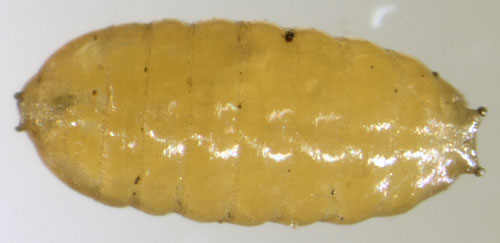|
||||||
|
Liriomyza
cicerina (Rondani, 1875) Chick pea leaf-miner Agromyza
cicerina Rondani, 1875. Bull. Soc. ent. ital. 7:
184 |
|||||||||||||||||||||||||||||||||||
Leaf-miner: An upper or lower surface shallow winding linear mine, which may develop into a secondary blotch. Pupation external (Spencer, 1976: 240). Upper- or lower-surface, greenish or whitish corridor, sometimes a blotch. The corridor does not widen much and is not associated with the midrib. Frass in conspicuous thread fragments, alternating along the sides of the corridor. Pupation outside the mine (Bladmineerders van Europa). The mine is also illustrated in British Leafminers. Larva: The larvae of flies are leg-less maggots without a head capsule (see examples). They never have thoracic or abdominal legs. They do not have chewing mouthparts, although they do have a characteristic cephalo-pharyngeal skeleton (see examples), usually visible internally through the body wall. The larva is described by de Meijere (1925, as ononidis); posterior spiracles with 7-9 bulbs. The larva is illustrated in Bladmineerders van Europa. Puparium: The puparia of flies are formed within the hardened last larval skin or puparium and as a result sheaths enclosing head appendages, wings and legs are not visible externally (see examples). Orange; posterior spiracles each with 7-9 bulbs (Spencer, 1976: 240). The puparium is illustrated in Bladmineerders van Europa.
Hosts in Great Britain and Ireland:
|

